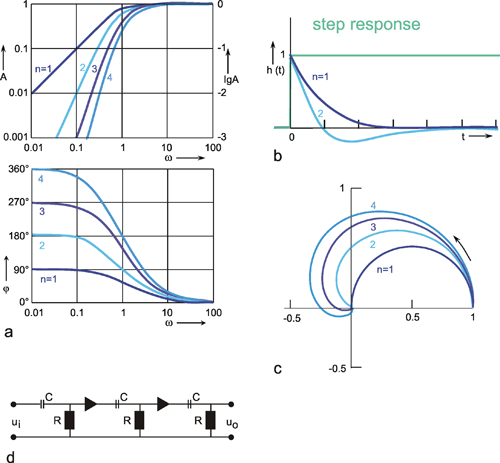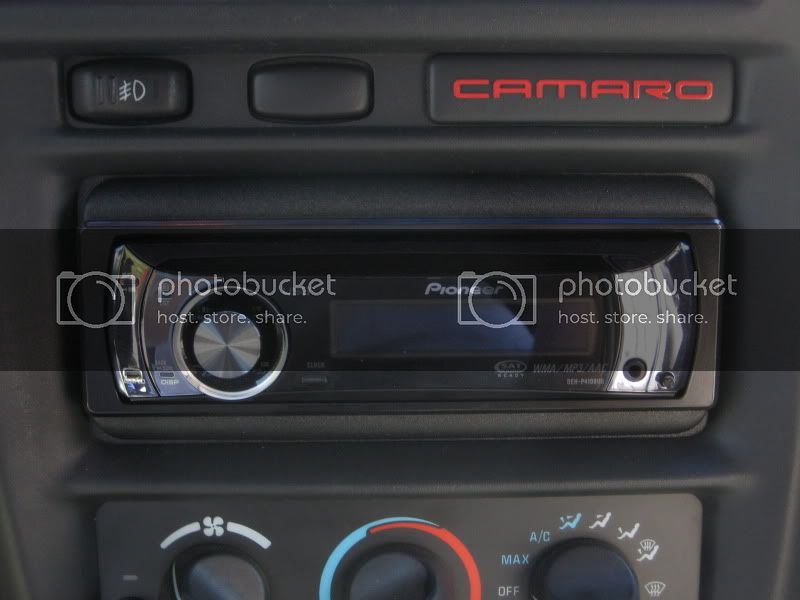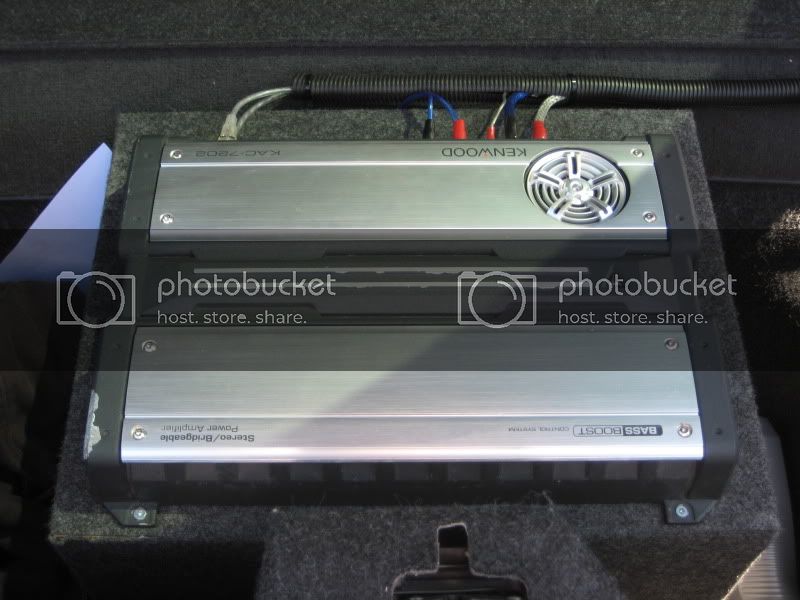You are using an out of date browser. It may not display this or other websites correctly.
You should upgrade or use an alternative browser.
You should upgrade or use an alternative browser.
Setting A HPF?
- Thread starter newb
- Start date
- Replies 19
- Views 12K
We may earn a small commission from affiliate links and paid advertisements. Terms
Some amps have a switch to cut out either high frequencies or low frequencies, most just cut out thee high frequencies for subs. If your head unit has a sub out set of RCAs then there should be a menu option to select the frequency to cut out. If it's just a regular rear out RCA then you will have to set the switch on the amp. The switch will say on the amp what frequencies it cuts out, and if you wanted it lower you would have to set it lower on the head unit that has a sub out.
1. Find Thiele/Small parameters for all speakers in car
2. Map frequency response for all speakers
3. Add cabin gain for your specific car
4. Determine where best overlap for all sets of speakers and subwoofers will be
5. Set crossovers accordingly
6. Verify results with frequency sweeps and proper listening instruments
Or something like that
2. Map frequency response for all speakers
3. Add cabin gain for your specific car
4. Determine where best overlap for all sets of speakers and subwoofers will be
5. Set crossovers accordingly
6. Verify results with frequency sweeps and proper listening instruments
Or something like that
cuts are not STRAIGHT cuts, they are waves.
so if you have a -6db cut on the radio and also use a -6 on the amp, you end up getting a double cut, something that looks like the top left graph:

the radio does line 1, and if you add the amp filter you get a cut that looks like line 4, so you lose more bass faster.
i generally just used the amp's low pass for the sub (lpf, 120), and the head units high pass for the 4 mains to keep them from blowing up on the hard bass (hpf, 80)
give or take.
so if you have a -6db cut on the radio and also use a -6 on the amp, you end up getting a double cut, something that looks like the top left graph:

the radio does line 1, and if you add the amp filter you get a cut that looks like line 4, so you lose more bass faster.
i generally just used the amp's low pass for the sub (lpf, 120), and the head units high pass for the 4 mains to keep them from blowing up on the hard bass (hpf, 80)
give or take.
Don't hate, lol.
My deck has all the pre out adjustments for the sub so I set the filter at 80hz and left the amp alone. Im still workin on my trunk latch, and cant get to the adjusters on the amp.
The frequency response for the sub is 18-500hz if that makes a difference. I still have factory mids, run off the factory amp.
The frequency response for the sub is 18-500hz if that makes a difference. I still have factory mids, run off the factory amp.
TommyTheCat
Gonzo Scientist
I might not be understanding, but what deck are you using? Does it have pre-outs and sub-outs?
What you want is a deck adjustment to High-pass the mids and Low-pass the sub at a frequency (80-120Hz is a standard range). But you also want to engage a High-pass on the sub amp somewhere around 10Hz lower than the tuning frequency (vented/bandpass box) around 25-45Hz. The deck filter is to blend the mids/subs while protecting the mids from overexcursion, and the sub-amp filter is the "rumble filter" to protect it from overexcursion.
What you want is a deck adjustment to High-pass the mids and Low-pass the sub at a frequency (80-120Hz is a standard range). But you also want to engage a High-pass on the sub amp somewhere around 10Hz lower than the tuning frequency (vented/bandpass box) around 25-45Hz. The deck filter is to blend the mids/subs while protecting the mids from overexcursion, and the sub-amp filter is the "rumble filter" to protect it from overexcursion.
Im not sure what the difference is between pre outs and sub outs.
I have a Pioneer DEH-4100 deck, a Kenwood KAC-7202 amo and a Pioneer TS-W306C sub. The deck has 2 RCA jacks and a signal wire which are run to the amp. The amp is bridged into the sub. I bought the deck because it was the lowest model that had the ability to make adjustments for the sub. I thought that was what pre outs were, but I dunno what Im talkin about. In the audio menu, there are 2 subwoofer sub menus. One for on/off, sub orientation. And another with a frequency and gain adjuster. Also in the audio menu is a high pass filter sub menu, it just has the one adjuster.
Any clarification on any of this would be greatly appreciated lol.
I have a Pioneer DEH-4100 deck, a Kenwood KAC-7202 amo and a Pioneer TS-W306C sub. The deck has 2 RCA jacks and a signal wire which are run to the amp. The amp is bridged into the sub. I bought the deck because it was the lowest model that had the ability to make adjustments for the sub. I thought that was what pre outs were, but I dunno what Im talkin about. In the audio menu, there are 2 subwoofer sub menus. One for on/off, sub orientation. And another with a frequency and gain adjuster. Also in the audio menu is a high pass filter sub menu, it just has the one adjuster.
Any clarification on any of this would be greatly appreciated lol.
first, mounting the amp to the sub box is generally a bad idea. lots of vibration can rattle the amp apart with time.
pre-outs are the 'rca' looking things on the deck.
i recommend using an 80 high pass for you main speakers on the deck
and
120 hz low pass on your sub with the amp
there's a bit of over-lap this way, that way both waves don't fall off and you have a hole in the frequency range.
put the receivers sub out put all the way up, and then match the amp's gain to a level that sounds full boom for you at high volume levels. generally, you don't want to go more than 80%.
Then, you can back down the gain with the receiver when you don't feel like being ghetto fab.
orientation is for phase. basically, phase is a delay box. it give s a few ms of 'wait' compared to the main speakers, or pre-hit, so that the music all matches up. It basically swaps + and - pulses to the sub so it fires differently. This is a purely 'ear' choice to make. I generally ran mine in normal phase.
pre-outs are the 'rca' looking things on the deck.
i recommend using an 80 high pass for you main speakers on the deck
and
120 hz low pass on your sub with the amp
there's a bit of over-lap this way, that way both waves don't fall off and you have a hole in the frequency range.
put the receivers sub out put all the way up, and then match the amp's gain to a level that sounds full boom for you at high volume levels. generally, you don't want to go more than 80%.
Then, you can back down the gain with the receiver when you don't feel like being ghetto fab.
orientation is for phase. basically, phase is a delay box. it give s a few ms of 'wait' compared to the main speakers, or pre-hit, so that the music all matches up. It basically swaps + and - pulses to the sub so it fires differently. This is a purely 'ear' choice to make. I generally ran mine in normal phase.
I dunno why that never occurred to me. That should be common sense lol. My reasoning for putin it there was to be able to take it all out easily. Just for track days, when I pull the rest of the interior out. I thought it was clever lol.
Alright, Ill give that a shot. Thanks for breakin it down.
Alright, Ill give that a shot. Thanks for breakin it down.
TommyTheCat
Gonzo Scientist
If you have this deck:DEH-P4100UB - CD Receiver with OEL Display, USB Direct Control of iPod, and 7-Way Rotary Commander | Pioneer Electronics USA It lists multiple pre-outs. What I'm calling a "sub-out" instead of a "pre-out" is just how you describe that there is a frequency setting to low-pass the audio output for the sub.
So there is a menu for:
On/Off - duh
Sub orientation - as B was kind-of putting it...this is a polarity switch. Its used to change the polarity of how the woofer is hooked up - either you've accidentally wired it backwards or it just so happens you need the phase shift to correctly sum between the subwoofer and the mids at the crossover. Phase is a frequency dependent delay - but dont think its works as a true delay function.
Frequency - this is the crossover frequency, which is a low-pass for the sub. I would try setting them the same at first.
Gain - its another gain setting.
Just to get this out there - Gain is NOT level. Gain is simply how much additional gain (get it) is given to the output. If you applied a 5Vpeak signal to the input, and the gain was +20dB, you'd get a 50Vpeak output (provided the amp can provide this). The gain knob on your amplifier is an input gain, while the amplifier has a physical gain you cannot control (something like 20-40dB depending). So the input gain is a relative control to lower the input sensitivity (output/input difference). So when you have a strong signal source, you turn down the gain to match the source and lower your noise floor. But if you have a weak source, you have to leave the gain up to make sure you can reach maximum output of the amplifier.
B, I wouldn't overlap the crossovers mostly because the sub is so much louder than the mids. Because the crossovers are not brickwall filters, there will be a natural overlap already.
So there is a menu for:
On/Off - duh
Sub orientation - as B was kind-of putting it...this is a polarity switch. Its used to change the polarity of how the woofer is hooked up - either you've accidentally wired it backwards or it just so happens you need the phase shift to correctly sum between the subwoofer and the mids at the crossover. Phase is a frequency dependent delay - but dont think its works as a true delay function.
Frequency - this is the crossover frequency, which is a low-pass for the sub. I would try setting them the same at first.
Gain - its another gain setting.
Just to get this out there - Gain is NOT level. Gain is simply how much additional gain (get it) is given to the output. If you applied a 5Vpeak signal to the input, and the gain was +20dB, you'd get a 50Vpeak output (provided the amp can provide this). The gain knob on your amplifier is an input gain, while the amplifier has a physical gain you cannot control (something like 20-40dB depending). So the input gain is a relative control to lower the input sensitivity (output/input difference). So when you have a strong signal source, you turn down the gain to match the source and lower your noise floor. But if you have a weak source, you have to leave the gain up to make sure you can reach maximum output of the amplifier.
B, I wouldn't overlap the crossovers mostly because the sub is so much louder than the mids. Because the crossovers are not brickwall filters, there will be a natural overlap already.
B, I wouldn't overlap the crossovers mostly because the sub is so much louder than the mids. Because the crossovers are not brickwall filters, there will be a natural overlap already.
Yeah... sub cutoff slightly lower than the mains cutoff, with the crossover slopes set just right so the overall frequency response is relatively flat. Don't think that's an option with the Pioneer 4100 though- but it is with my Alpine 7998 and my Pioneer 980BT.
So when you have a strong signal source, you turn down the gain to match the source and lower your noise floor. But if you have a weak source, you have to leave the gain up to make sure you can reach maximum output of the amplifier.
I got a dumb question. The signal source would be the music right? lol
but it is with my Alpine 7998
Definitely outa the budget. Especially since the deck I have still functions lol.
I got a dumb question. The signal source would be the music right? lol
Definitely outa the budget. Especially since the deck I have still functions lol.
Source = preamp outputs from your head unit.
The Alpine CDA-7998 came out in 2001 or 2002- it was $800 when I bought it, probably $300 used now. It's ooooooold but it sounds goooood. Not too many current features though. Ten years is a long time in the car stereo world.
Similar threads
- Replies
- 5
- Views
- 6K
- Replies
- 8
- Views
- 5K


